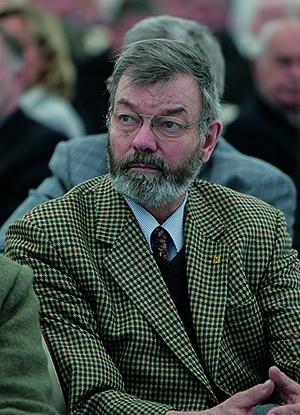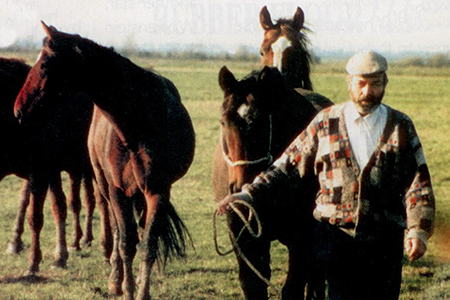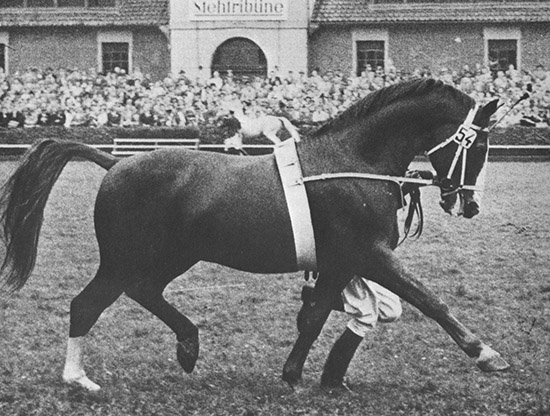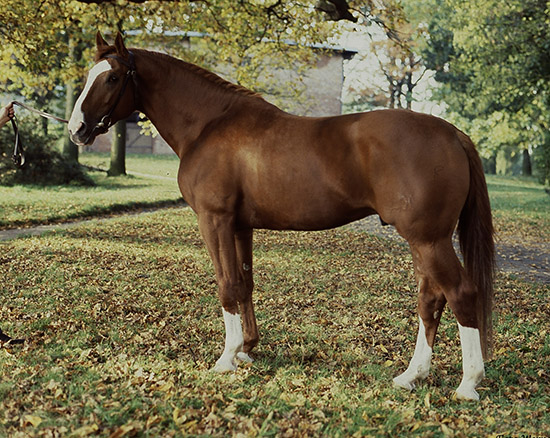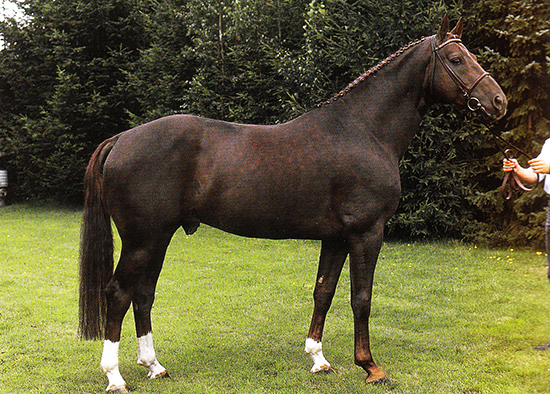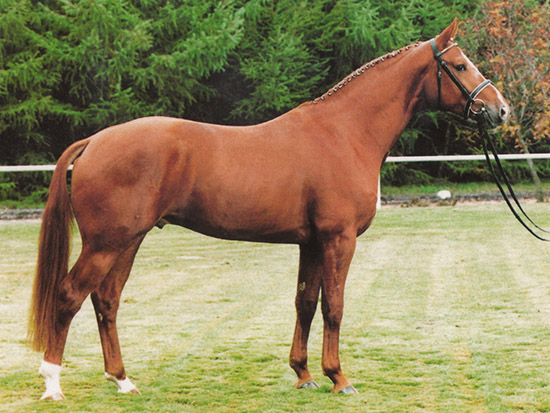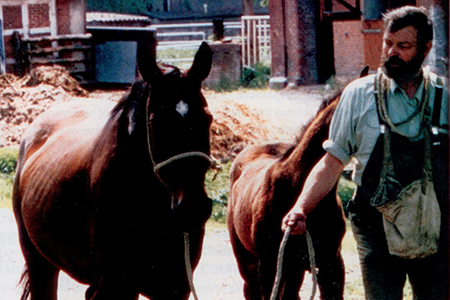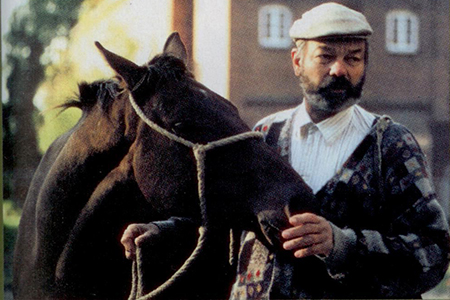One of the best things about my job, is the people I get to meet, and there is no group that I’d rather visit than the great horse breeders. They tend to be very singular individuals, and none are more distinctive than Dr Schulz of Stellenfleth (to distinguish himself from all the other Germans with the same surname, he is most often called Schulz Stellenfleth, wedding his own name to the locality in which his stud is found.)
And what a wonderful place it was. Right in the northern most part of the Hanoverian breeding district, his horses shared the wind swept marshes of the River Elbe with the huge flocks of wild geese, and Dr Schulz looked as if he has been crafted from the land itself.
Yet the truth is he was a relative newcomer to Stellenfleth. His family home was in part of Germany that was absorbed into Poland at the end of the last war, and they moved to re-establish their sheep and cattle farm. His extraordinary achievements came in three short decades.
“I loved this country the first time I saw it,” he told me. And the move brought the Schulz family into contact with horses for the first time. The former owners had horses, and Dr Schulz’s first contact was with the working horses, carrying out apples to them in his holidays.
Duellant – founded the line
On a property of 200 hectares, the horse population grew at one stage to 45 and they all traced their ancestry to one mare, Duellheldin by Duellant. On the basis of that mare line, Dr Schulz bred SIX of the more famous licensed Hanoverian stallions of recent times.
“We started in 1964 with Duellheldin. She had two daughters by the Thoroughbred, Marcio, and out of one of those mares, Marbel, we bred Garibaldi 1 in 1971 and Garibaldi11 in 1974.”
Garibaldi II
“Garibaldi I looked more a stallion, taller and more impressive, but Garibaldi II was the better stallion – he was so elastic that he proved a very good dressage sire. Both of them were champions at the Performance Test.”
Brentano II
It seems Dr Schulz’s famous stallions came in twos, and the next famous duo was Brentano 1 and 11, and again, Marbel features heavily, since it was her daughter, Ferbel, by the famous Ferdinand, who when bred to Grande, produced Glocke, the dam of the Brentanos. The Brentanos are by Bolero, a horse with three quarters Thoroughbred blood, being by Black Sky, a Thoroughbred, out of Baroness, another Thoroughbred, tracing to the Djebel line. Brentano 11 was champion of the stallion licensing in 1983.
In 1989, Dr Schulz bred another star, Wolkenstein 1, by Weltmeyer, but this time another key ingredient in Dr Schulz’s breeding program – Grande – figures largely in the equation. The dam of Wolkenstein 1 is Wolke, out of Gänseliesel (Goosegirl), by Grande, and in turn, out of the marvellous Marbel. Wolkenstein 1 became a breeding stallion in the Hessen Studbook.
Wolkenstein II
In 1990, Dr Schulz bred Wolkenstein 11, who was reserve champion of his licensing, and who out of his first crop of colts, produced the reserve champion of 1997, and the champion colt of 1998!
In all, Dr Schulz bred twenty colts that went on to be licensed, performance tested stallions.
“I was fortunate, I had a good start with Duellant, then Marcio xx. I was one breeder who used Grande, as much as possible. Many breeders didn’t like him, the foals were small, and although they had a good eye, they didn’t have the nicest head. I saw how good they were as riding horses and I bred nine Grande mares.”
“I have only used horses of my own genetic foundation, and horses I liked. It’s is not just a matter of thinking, it is very much a question of feeling. Once I tried to use an outside mare, but she didn’t go in foal.”
“I’m always trying to breed a better horse, I think I’ll try as long as I live. The result doesn’t have to be a champion but what I think is a good horse.”
“I prefer to use stallions in my neighbourhood. If we use stallions further away we have to take the mare and foal, and that’s too far. You can use chilled semen, but you can’t get any on Sunday or Monday, then if you miss, you might have to wait two or three weeks before you can breed the mare.”
“In former times when you went to a mare show, all the mares were from the local stallions – Grande, Bolero, Wendekreis. Now they are from all over the Hanoverian region, and the breeders often don’t know the stallions – they look at the fine photos, then the ‘numbers’ (the breeding rankings) and notes.”
“In former times, there were no statistics. Breeders looked at the horses in question. How good do they look? Now there is a flood of numbers, part of that is good – but for the individual horse it is dangerous. When breeders only look at numbers and believe they have a real picture of the horse, it is very dangerous. The breeder must look for himself, and the breeder starts looking at the birth of the foal.”
“It’s written in Latin, in my pedigree book, ‘horses are my life’.”
A few days after we met Dr Schulz we saw him again, at the stallion licensing, he presented me with a piece of paper, a summary of his breeding credo:
My most important principle in breeding =
For building the generations, I only use daughters of stallions, the children of which are successful in the sport.

